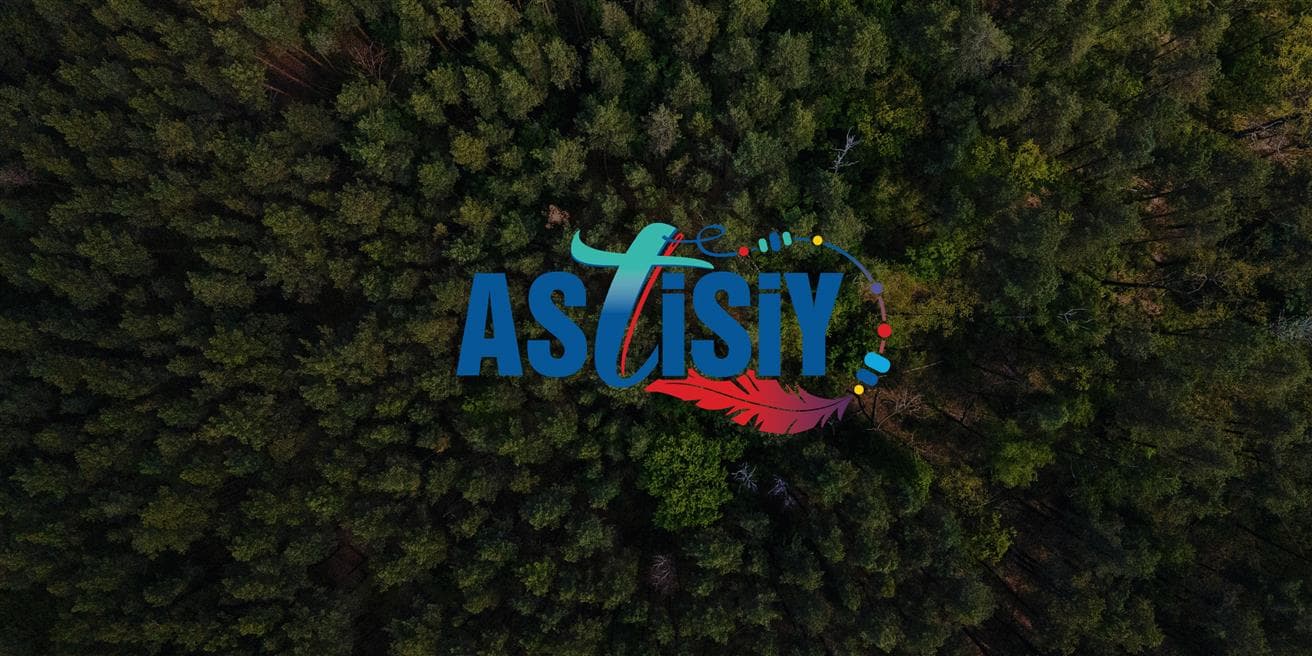There are few materials strong enough to withstand great force while also being delicate enough to weave together fine jewelry and art. But leave it to Mother Nature to create such a thread—sinew.
Sinew, a durable material used by Indigenous Peoples to make everything from clothing that withstands the harsh elements to dreamcatchers, is made from dried animal tissue and is one of nature’s most versatile and reliable materials.
These are the qualities that inspired the name for Astisiy—a partnership between Suncor and eight Indigenous communities in the Regional Municipality of Wood Buffalo (RMWB) formed to purchase all of TC Energy’s 15 per cent equity interest in the Northern Courier Pipeline (NCP).
A Cree word for “thread made from sinew,” Astisiy brings together Indigenous communities, including three First Nations (Athabasca Chipewyan First Nation, Chipewyan Prairie First Nation and Fort McMurray #468 First Nation) and five Métis communities (Conklin Métis Local 193, Fort Chipewyan Métis Local #125, Fort McKay Métis Nation, McMurray Métis and Willow Lake Métis Nation) and Suncor in a partnership that will bring revenue to the Indigenous communities and the benefits of a strong partnership to all.
With the different cultures woven together in partnership, Gail Gallupe from the McMurray Métis community says, “We like to think that we are like that thread.”
How it started
Like many projects in the Canada’s oil sands, the story of Astisiy begins in Fort McMurray.
When the Thebacha partnership for the East Tank Farm (ETF) was developed as a first of its kind equity partnership between Suncor and two First Nations, it generated a lot of attention from other Indigenous communities in the RMWB.
As the dust was still settling on Suncor’s landmark ETF agreement, the wheels starting to turn on the next partnership: Astisiy.
“We’ve been in and around these communities since 1967, when we first started operating in the oil sands, and we believe we are going to be here for a long time,” says Tracey Wolsey, Suncor’s Director of Indigenous and Community Relations for the Wood Buffalo area. “Building equity partnerships like Astisiy are one way to establish long-term relationships with Indigenous communities.”
Originally built by TC Energy in 2017, the NCP is a 90-kilometre dual pipeline that carries hot or diluted bitumen and diluents such as condensate between Suncor’s Fort Hills site to its ETF facility, both just north of Fort McMurray, Alta.
Talks between Suncor and the Indigenous communities to form the Astisiy partnership began in 2019.
“You have to have skin in the game,” says Ron Quintal from Fort Mckay Métis Nation. “Our communities had to raise the capital to actually make this investment. Having ownership of this asset is a paradigm shift around Indigenous involvement in major energy projects.”
Astisiy signifies a new type of partnership between Suncor and Indigneous communities, something that can’t be explained with dollar figures alone, but with strong, meaningful relationships—a tangible example of Suncor’s Journey of Reconciliation, which focuses on relationships with Indigenous Peoples.
The Astisiy partnership is unique because it includes not only several First Nations, but also Métis communities. No other existing equity partnership in Canada’s oil and gas sector includes Métis.
Once the transitions are complete, the Indigenous communities will benefit from steady revenue streams that they will have full control over to use for funding education, health care, housing, elder care and other community initiatives. For the Métis communities especially, the revenue from Astisiy is vital as Métis communities do not receive the same federal funding as First Nations.
The new partnership was announced today, and the purchase of the NCP interest is expected to close in the coming months.



